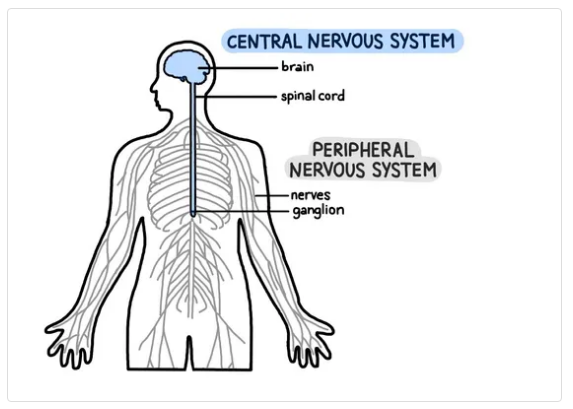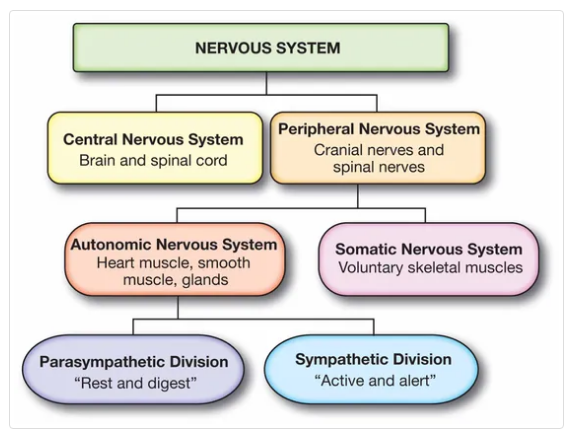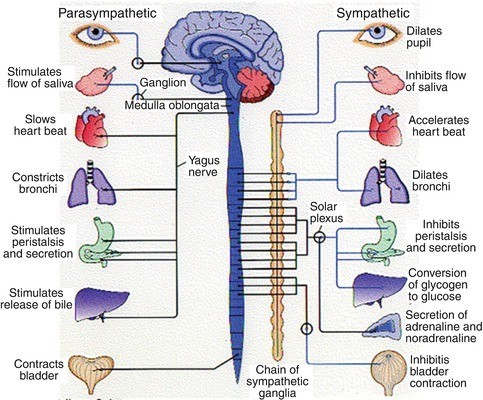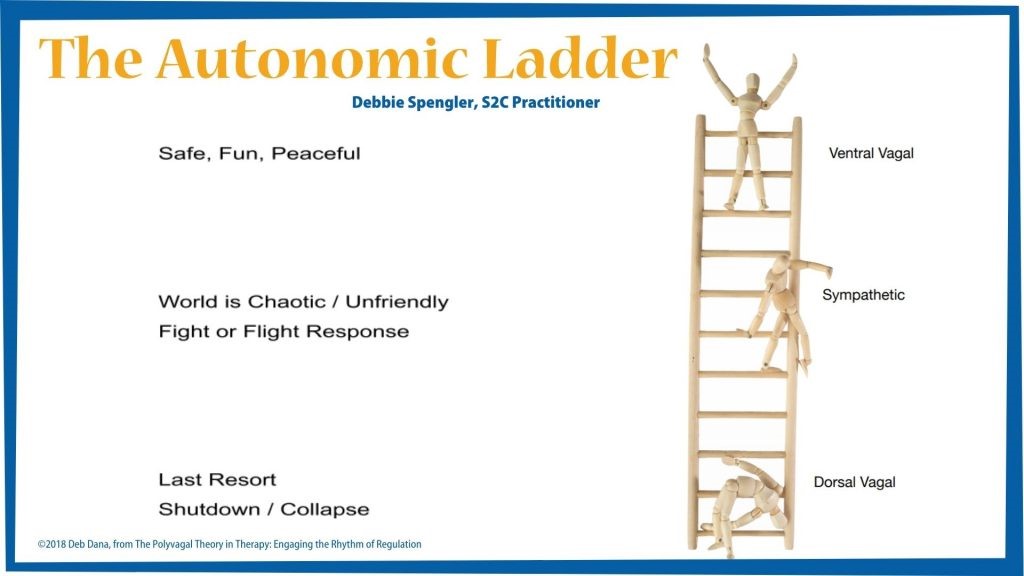Share




Some people describe themselves as having “nerves of steel”, while others who are easily frazzled would say that they are a “ball of frayed nerves”. The human nervous system is complex, but do you ever sit down and think about the state of your nervous system and how it operates? The “Polyvagal Theory”, which was developed by Dr. Stephen W. Porges, attempts to explain how our nervous system and our feeling states are connected.


Nervous System | Credits: Simply Psychology
The autonomic nervous system is in charge of keeping the body in a state of balance called homeostasis. This system is further subdivided into the parasympathetic nervous system and the sympathetic nervous system. The sympathetic nervous system is in charge of the body’s “fight or flight” response. When one feels threatened or stressed, this system makes the heart beat faster so that more blood can go quickly to different parts of the body that might need it. It also causes adrenaline to be released so that muscles can have extra strength for a quick response. The parasympathetic nervous system, on the other hand, does the opposite job; it is the system that activates our rest and digest response.

Through his research, which focuses on the vagus nerve—a part of the autonomic nervous system—Dr. Porges proposes that the parasympathetic nervous system is further divided into two parts. The ventral vagal branch is responsible for our social engagement system, which is activated when we feel safe and in control. The dorsal vagal branch, on the other hand, is responsible for parasympathetic immobilization, which is activated when a threat is detected that causes us to collapse.
Dr. Porges theorizes that there is a hierarchy to this system; he describes it as a ladder. If we are at the top of the ladder, then we are in the social engagement response (ventral vagal branch), if we move down to the middle, we are in the fight-or-flight response (sympathetic branch), and if we move to the bottom, we are in the shutdown response (dorsal vagal branch).

For example, your boss criticizes your work. If you do not perceive the criticism as a threat, you can stay in the social engagement ventral vagal zone and you will be able to calmly reply. However, if you perceive the criticism as an attack, you will go to a more defensive state, which is the sympathetic branch, and you might get angry and start arguing (fight response) or try to find the nearest exit to leave (flee response). If you perceive the criticism as disapproval, you may enter the dorsal vagal branch where you may experience feelings of inadequacy and failure, and end up feeling isolated and unable to act. These responses are not choices that you make consciously; they are related to how your nervous system was shaped according to your history and experience.
Why did this new distinction have an impact in the world of psychology?
When looking at mental health problems from the perspective of the polyvagal theory that connects our nervous system and feeling states; a new way of understanding emerges. Often, how we react to things is out of our control and is dictated by the inherent nature of the nervous system we were born with and how it was shaped by our environment and relationships as we grow up.
This theory gives a new framework to understand trauma and people’s various responses to it. When those who suffer from mental health problems understand the part their nervous system plays in how they feel about themselves and others, it takes away feelings of shame and guilt, which can accompany being in those states and this can have a great impact on their emotional wellbeing and healing journey.
Watch this interview with Dr. Porges, in which he explains the Polyvagal Theory
References
counsellinginhamilton.com
nicabm.com/polyvagal-theory
nicabm.com/stephen-porges
nytimes.com
theguardian.com/stephen-porges
theguardian.com/think-clearly
Image by cookie_studio on Freepik.